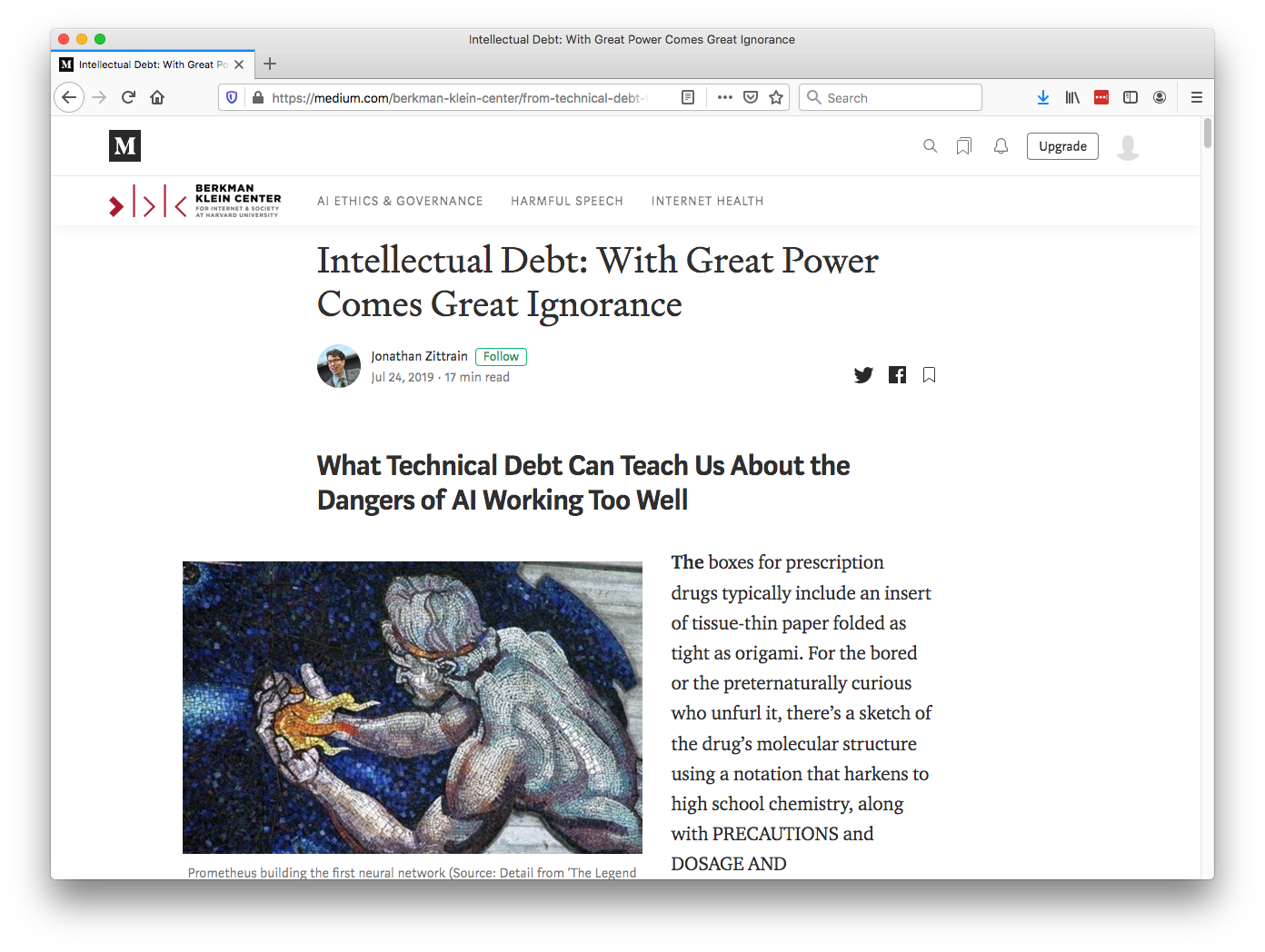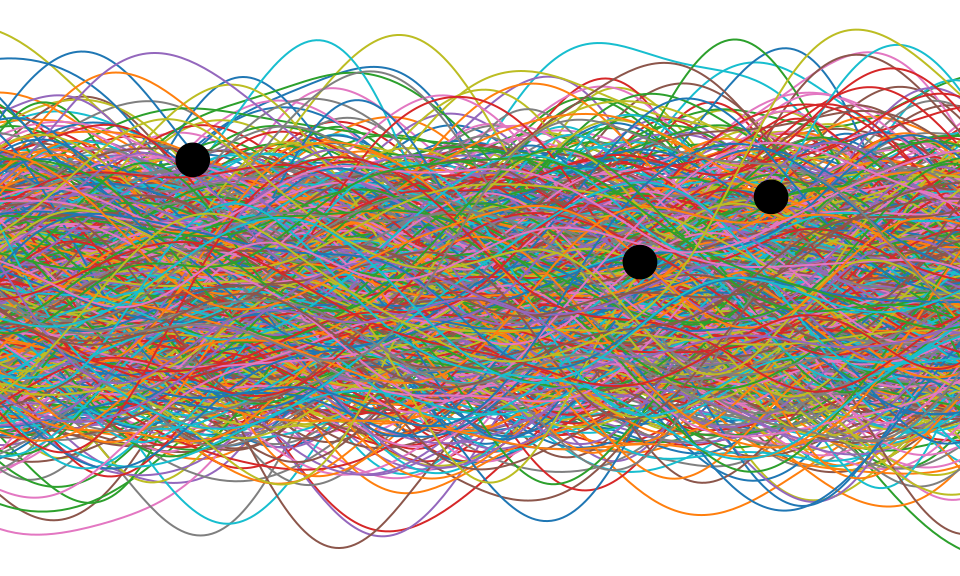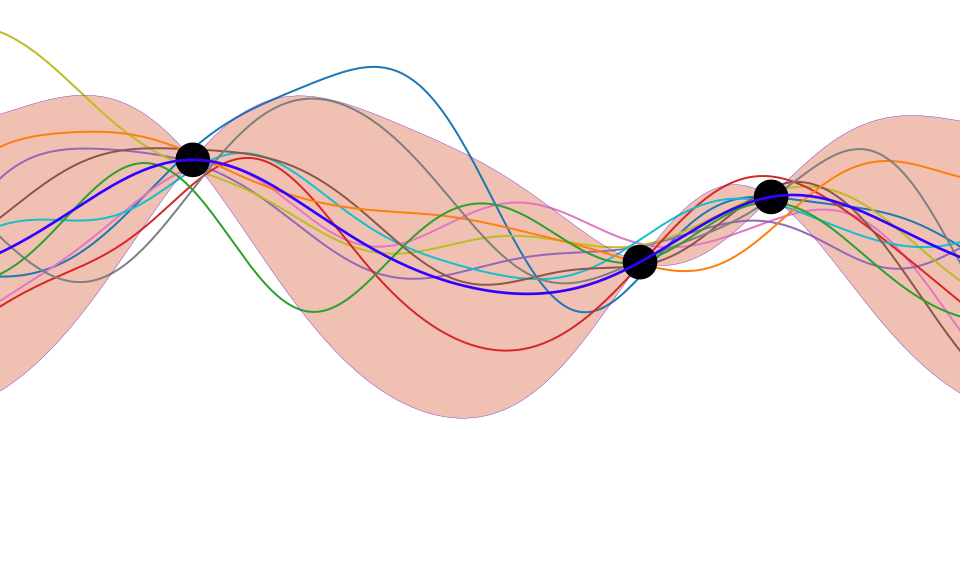Interpretable Models
“AI and Intellectual Debt”
Virtual Interaction with Machine Learning Course
The Great AI Fallacy

Separation of Concerns
Intellectual Debt
Technical debt is the inability to maintain your complex software system.
Intellectual debt is the inability to explain your software system.
The Mythical Man-month
.jpg)
Technical Consequence
- Classical systems design assumes decomposability.
- Data-driven systems interfere with decomponsability.
Bits and Atoms
- The gap between the game and reality.
- The need for extrapolation over interpolation.
Information and Embodiment

Embodiment Factors
| bits/min | billions | 2,000 |
|
billion calculations/s |
~100 | a billion |
| embodiment | 20 minutes | 5 billion years |
Heider and Simmel (1944)
Machine Learning
- Driver of two different domains:
- Data Science: arises from the fact that we now capture data by happenstance.
- Artificial Intelligence: emulation of human behaviour.
- Connection: Internet of Things
Machine Learning
- Driver of two different domains:
- Data Science: arises from the fact that we now capture data by happenstance.
- Artificial Intelligence: emulation of human behaviour.
- Connection: Internet of
Things
Machine Learning
- Driver of two different domains:
- Data Science: arises from the fact that we now capture data by happenstance.
- Artificial Intelligence: emulation of human behaviour.
- Connection: Internet of People
What does Machine Learning do?
- ML Automates through Data
- Strongly related to statistics.
- Field underpins revolution in data science and AI
- With AI:
- logic, robotics, computer vision, speech
- With Data Science:
- databases, data mining, statistics, visualization
Ride Allocation Prediction
Machine Learning Systems Design
Fragility of AI Systems
- They are componentwise built from ML Capabilities.
- Each capability is independently constructed and verified.
- Pedestrian detection
- Road line detection
- Important for verification purposes.
Question Mark Emails

Intellectual Debt

Technical Debt
- Compare with technical debt.
- Highlighted by Sculley et al. (2015).
FIT Models to FIT Systems
- Focus in machine learning has been on FAcT learning.
- Fairness, accountability and Transparency in individual models.
- But individual models aren’t the problem.
- Fariness, interpetability and transparency required for whole system.
Buying System
Monolithic System
Service Oriented Architecture
Buying …
… to Banking
How the GDPR May Help
How GDPR May Help
- Reflection on data eco-systems.
- GDPR: Good Data Practice Rules
- When viewed as best practice rather than regulation they hightlight problems in data ecosystems.
Emulation
Emulation
Emulation
Emulation
Emulation





Deep Emulation
Deep Emulation
Deep Emulation
Deep Emulation
Emulation
Conclusion
- AI is fundamentally ML System Design
- We are not ready to deploy automation in uncontrolled environments.
- Until we can monitoring and update will be key.
Thanks!
- twitter: @lawrennd
- podcast: The Talking Machines
- newspaper: Guardian Profile Page
- blog: http://inverseprobability.com
References
Brooks, F., n.d. The mythical man-month. Addison-Wesley.
Brooks, F., n.d. The mythical man-month. Addison-Wesley.
Heider, F., Simmel, M., 1944. An experimental study of apparent behavior. The American Journal of Psychology 57, 243–259.
Heider, F., Simmel, M., 1944. An experimental study of apparent behavior. The American Journal of Psychology 57, 243–259.
Sculley, D., Holt, G., Golovin, D., Davydov, E., Phillips, T., Ebner, D., Chaudhary, V., Young, M., Crespo, J.-F., Dennison, D., 2015. Hidden technical debt in machine learning systems, in: Cortes, C., Lawrence, N.D., Lee, D.D., Sugiyama, M., Garnett, R. (Eds.), Advances in Neural Information Processing Systems 28. Curran Associates, Inc., pp. 2503–2511.
Sculley, D., Holt, G., Golovin, D., Davydov, E., Phillips, T., Ebner, D., Chaudhary, V., Young, M., Crespo, J.-F., Dennison, D., 2015. Hidden technical debt in machine learning systems, in: Cortes, C., Lawrence, N.D., Lee, D.D., Sugiyama, M., Garnett, R. (Eds.), Advances in Neural Information Processing Systems 28. Curran Associates, Inc., pp. 2503–2511.